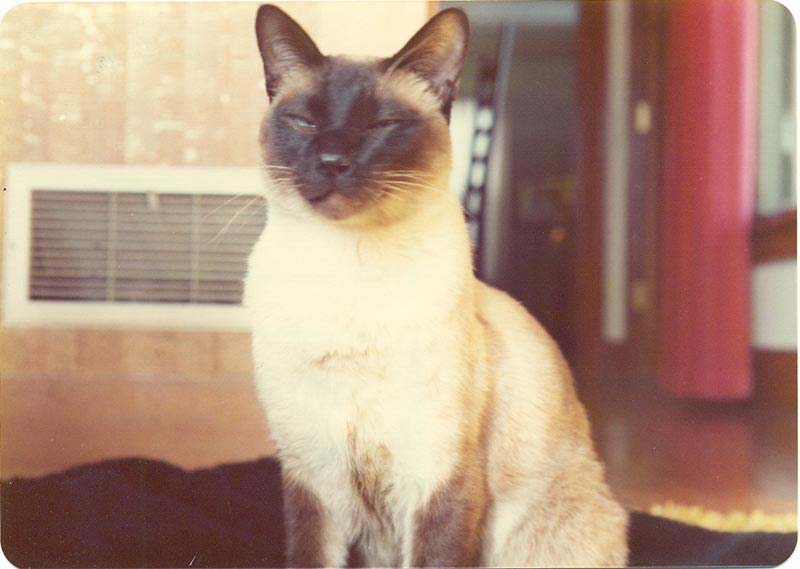¡Los animales científicos existen! / Scientific animals exist!
¡Los animales científicos existen!
Scientific animals exist!
- Diferentes animales que son investigadores
- Different animals that are researchers
Existen algunos investigadores, que, por diversos motivos, han puesto a sus mascotas u otros animales cercanos como coautores de sus publicaciones, sí, lo que leíste, no en agradecimientos, sino que directamente como investigadores, algunos de los más famosos son F.D.C. Willard, Galadriel Mirkwood y H.A.M.S. ter Tisha (Nicholson et al., n.d.).
F.D.C. Willard es probablemente el caso más famoso, todo comenzó cuando el profesor de física Jack H. Hetherington, de la Michigan State University, trabajaba en un artículo como único autor, uno de sus colegas le hizo ver que utilizaba el plural para referirse a los autores y en lugar de corregir este error, Hetherington tuvo la idea de agregar a su gato Chester, aunque acreditado como F.D.C. Willard, siglas de “Felis domesticus, Chester” y Willard que corresponde al nombre del padre de Chester (Boddy, 2016; Scielo, 2015). Su primer artículo fue titulado “Two-, Three-, and Four-Atom Exchange Effects in bcc 3He”¹ (Hetherington & Willard, 1975) que se trataba de una investigación sobre el comportamiento de los átomos a diferentes temperaturas (Grundhauser, 2016). Aunque Hetherington ya había expuesto en una conferencia de 1987 quién era su compañero (Ritchter-Boix, n.d.; Open Culture, 2017), la identidad de Chester fue finalmente descubierta algunos años después, debido a un estudiante que intentó contactarlo (Milenio Digital, 2018).
Galadriel Mirkwood es otro de los casos más famosos, se trata de una perra, mascotaa de la bióloga experta en inmunología, Polly Matzinger (Erren et al., 2017). Los motivos para agregar a su mascota como coautora fueron los mismos de Hetherington. La primera publicación de Galadriel Mirkwood fue titulada “In a fully H-2 incompatible chimera, T cells of donor origin can respond to minor histocompatibility antigens in association with either donor or host H-2 type”² (Matzinger & Mirkwood, 1978), aunque a diferencia de Hetherington, Matizinger fue baneada de la revista “Journal of Experimental Medicine” debido a su inusual coautora. Matzinger pudo volver a publicar en dicha revista después de la muerte del editor.
H.A.M.S ter Tisha, un hamster llamado Tisha, mascota de Andre Geim, físico conocido por ser uno de los descubridores del grafeno y ganador del Nobel (Guerrero, 2010). Tisha fue co-autor de un artículo titulado "Detection of earth rotation with a diamagnetically levitating gyroscope"³ (Geim & Tisha, 2001).
Shape of F.D.C. Willard's pawprint
F.D.C. Willard is probably the most famous case, it all started when physics professor Jack H. Hetherington, of Michigan State University, was working on an article as the sole author, one of his colleagues made him see that he used the plural to refer to the authors and instead correct this error, Hetherington had the idea of adding his cat Chester, although credited as F.D.C. Willard, acronym for "Felis domesticus, Chester" and Willard corresponding to the name of Chester's father (Boddy, 2016; Scielo, 2015). His first article was titled "Two-, Three-, and Four-Atom Exchange Effects in bcc 3He" (Hetherington & Willard, 1975) which was an investigation into the behavior of atoms at different temperatures (Grundhauser, 2016). Although Hetherington had already exhibited at a 1987 conference who his partner was (Ritchter-Boix, n.d.; Open Culture, 2017), Chester's identity was eventually discovered a few years later, due to a student trying to contact him (Milenio Digital, 2018).
Galadriel Mirkwood is another of the most famous cases, she is a bitch, pet of the biologist expert in immunology, Polly Matzinger (Erren et al., 2017). The reasons for adding her pet as co-author were the same as Hetherington. Galadriel Mirkwood's first publication was titled "In a fully H-2 incompatible chimera, T cells of donor origin can respond to minor histocompatibility antigens in association with either donor or host H-2 type" (Matzinger & Mirkwood, 1978), although unlike Hetherington, Matizinger was banned from the journal "Journal of Experimental Medicine" due to its unusual co-author. Matzinger was able to republish in that magazine after the publisher's death.
H.A.M.S ter Tisha, a hamster named Tisha, pet of Andre Geim, physicist known for being one of the discoverers of graphene and Nobel laureate (Guerrero, 2010). Tisha co-authored an article entitled "Detection of earth rotation with a diamagnetically levitating gyroscope" (Geim & Tisha, 2001).
Polly Matzinger & Annie (Galadriel Mirkwood)

Wikimedia Commons
Erren, T. C., Groß, J. V., Wild, U., Lewis, P., & Shaw, D. M. (2017). Crediting animals in scientific literature: Recognition in addition to Replacement, Reduction, & Refinement [4R]. EMBO reports, 18(1), 18–20. DOI: https://doi.org/10.15252/embr.201643618
Geim, A. K., Tisha, H.A.M.S. ter. Detection of earth rotation with a diamagnetically levitating gyroscope. Physica B: Condensed Matter 294-295, 736–739 Elsevier BV. DOI: https://doi.org/10.1016/S0921-4526(00)00753-5
Grundhauser, E. (2016). In 1975, a Cat Co-Authored a Physics Paper. Slate. https://slate.com/human-interest/2016/10/in-1975-a-cat-named-f-d-c-willard-co-authored-a-physics-paper.html
Guerrero, T. (2010). Dos 'jóvenes' científicos con un gran sentido del humor. El Mundo. https://www.elmundo.es/elmundo/2010/10/05/ciencia/1286280280.html
Hetherington, J. H., Willard, F. D. C. (1975). Two- Three-, and Four-Atom Exchange Effects in bccHe3. Physical Review Letters 35, 1442–1444 American Physical Society (APS). DOI: https://doi.org/10.1103/PhysRevLett.35.1442
Matzinger, P., Mirkwood, G. (1978). In a fully H-2 incompatible chimera, T cells of donor origin can respond to minor histocompatibility antigens in association with either donor or host H-2 type. J Exp Med; 148 (1): 84–92. doi: https://doi.org/10.1084/jem.148.1.84
Milenio Digital. (2018). Un gato firmó un estudio científico y engañó a todos. Milenio. https://www.milenio.com/cultura/un-gato-firmo-un-estudio-cientifico-y-engano-a-todos
Nicholson, J., Pete., Pepe, A. (n.d.). Three Scientific Papers With Pets as Authors 🐾 . Authorea. https://www.authorea.com/users/8850/articles/166226-three-scientific-papers-with-pets-as-authors
Open Culture. (2017). When a Cat Co-Authored a Paper in a Leading Physics Journal (1975). Open Culture. https://www.openculture.com/2017/07/when-a-cat-co-authored-a-paper-in-a-leading-physics-journal-1975.html
Cómo citar este artículo:
Nocetti, F. A. (2021). ¡Los animales científicos existen!. NabbuBlog. Recuperado de http://nabbublog.blogspot.com/2021/05/los-animales-cientificos-existen.html
How to cite this article:
² En una quimera totalmente incompatible con H-2, las células T de origen donante pueden responder a antígenos de histocompatibilidad menores en asociación con el tipo H-2 del donante o del huésped.
³ Detección de la rotación de la tierra con un giroscopio de levitación diamagnética.









